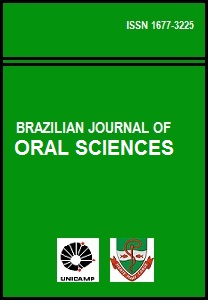Abstract
Aim: To evaluate the reliability of linear measurements in virtual models by comparing measurements performed on virtual models obtained from alginate impression scans, plaster model and measurements performed on conventional plaster model. Methods: The sample comprised 26 randomly selected patients to have impressions of their upper and lower jaws taken using alginate and their bite registration using a wax bite. The virtual models were obtained by scanning the alginate impression and the plaster model in a laser surface scanner (R700; 3Shape, Copenhagen, Denmark), and the measurements were performed using the Ortho Analyser (3Shape) proprietary software. The linear measurements of the size of the teeth mesial to distal, arch perimeter, intercanine distance and intermolar distance in the upper and lower arches were performed on plaster models, digital impressions and digital models, by three observers and repeated after 15 days on 8 models for intra-observer evaluations. Data were tabulated and analyzed statistically. Intra-class correlation to check the agreement of intra and inter-observers and ANOVA test were used to analyze the differences between measurements of digital models from impression and digital models from plaster. Results: The results showed a statistically significant difference (pd”0.05) for the posterior teeth, anterior teeth, upper arch perimeter and lower inter-canine distance, comparing the digital models with plaster models, but these differences are considered clinically non-significant. Conclusions: Digital models were proven be reliable and clinically acceptable for measuring tooth width, perimeter arches, intercanine and intermolar distances.
This work is licensed under a Creative Commons Attribution 4.0 International License.
Copyright (c) 2015 Débora Duarte Moreira, Gina Delia Roque Torres, Karla de Faria Vasconcelos, Deborah Queiroz de Freitas, Gláucia Maria Bovi Ambrosano
Downloads
Download data is not yet available.

